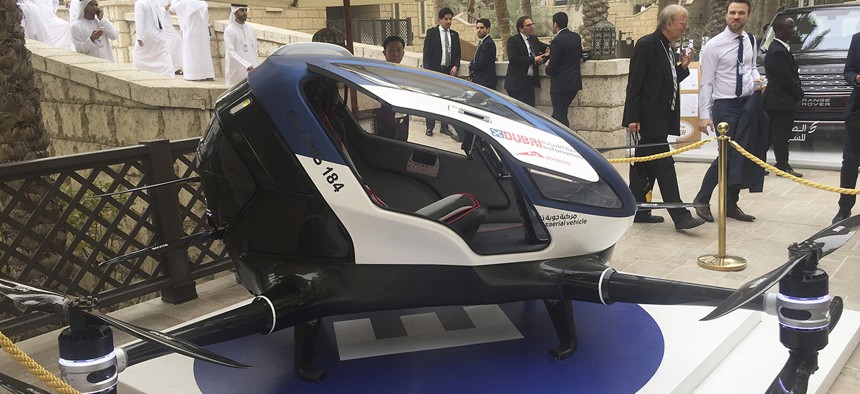People Are Ready For Flying Cars—But Only If They Drive Themselves

A model of EHang 184 and the next generation of Dubai Drone Taxi is seen during the second day of the World Government Summit in Dubai, United Arab Emirates, Monday, Feb. 13, 2017. Jon Gambrell/AP
According to one poll, many would prefer a robot escort them above the Earth.
We all want flying cars. We just don’t want drivers.
The University of Michigan polled Americans on their preferences for “flying cars,” and the results show that nearly half are ready to commute by air. Of the 508 adults polled, 221 said they were “very interested” in a taxi-like, self-driving/self-flying car.
Perhaps surprisingly, the majority of people in all age groups opted to skip the pilot and let their robot drivers escort them above Earth; only 81 said they were “very interested” in a flying taxi that was helmed by a licensed pilot.
The survey, an online poll with a margin of error of 4.3 percent, was designed to “inform the decisions of designers and regulators of the initial generation of flying cars,” writes co-author Michael Sivak, a transportation researcher at the University of Michigan. No flying cars are yet in mass production, but plans are aloft. Uber said last year it wants to build an “Elevate” network of fully electric, on-demand aircraft to take off and land vertically that deliver you to your destination. Other companies have had successful test flights of various other designs in recent years as well.
The survey lays out a clear vision of what most flying car enthusiasts say they want today: a self-driving, electric-powered vehicle with room for 3-4 people, a minimum range of 400 miles, and vertical takeoff capability. The cost should be no more than $200,000 and almost everyone agrees: a parachute is “extremely” or at least “very” important.


